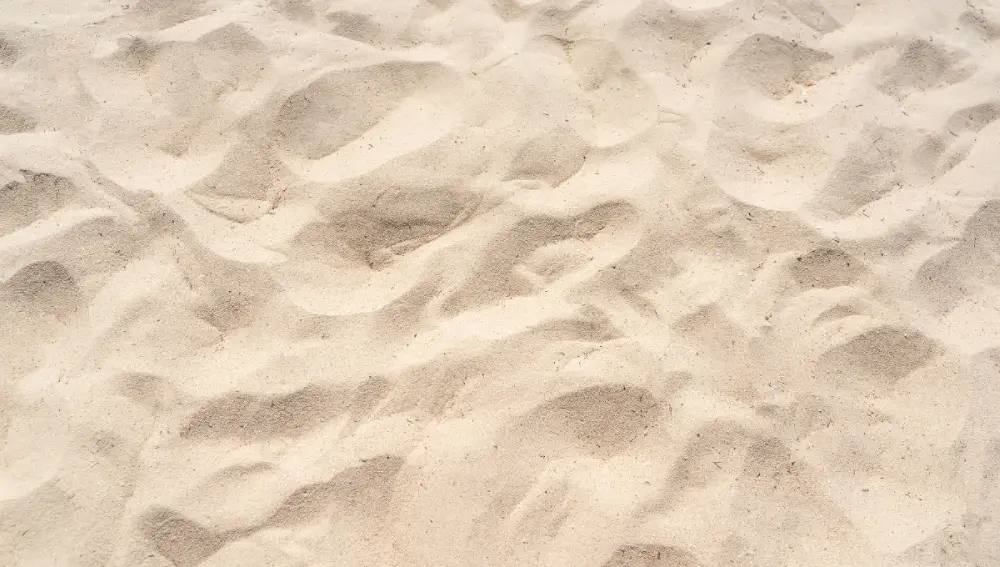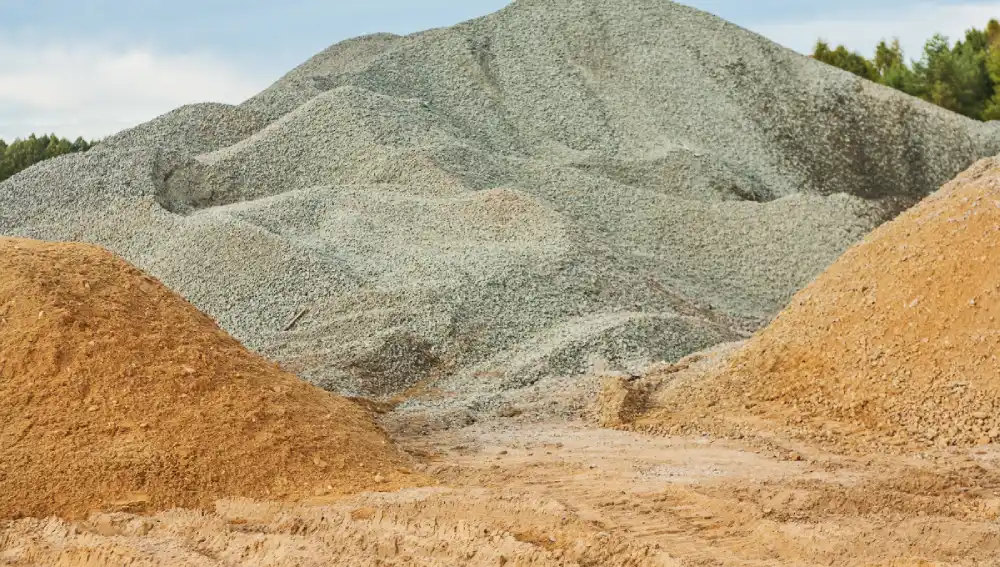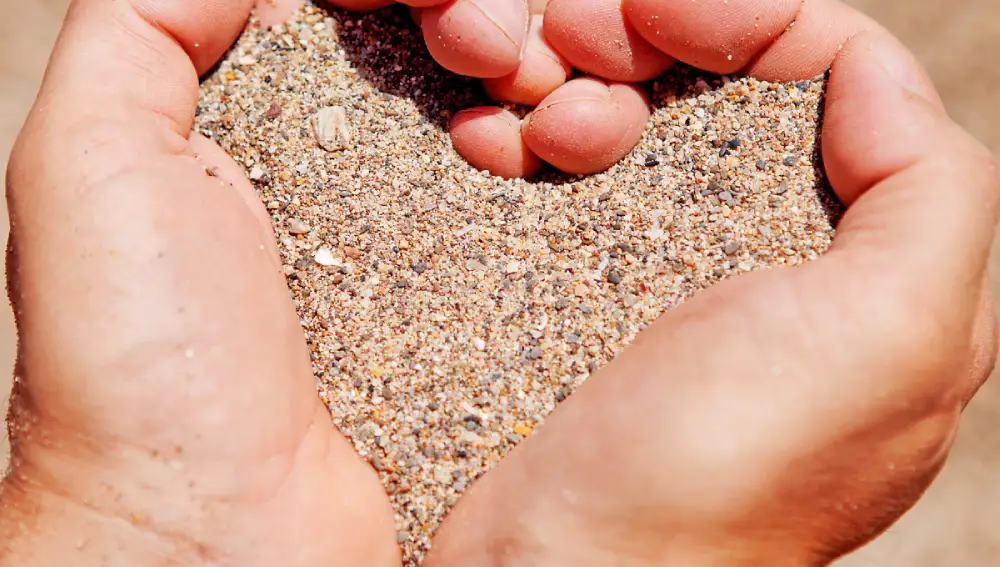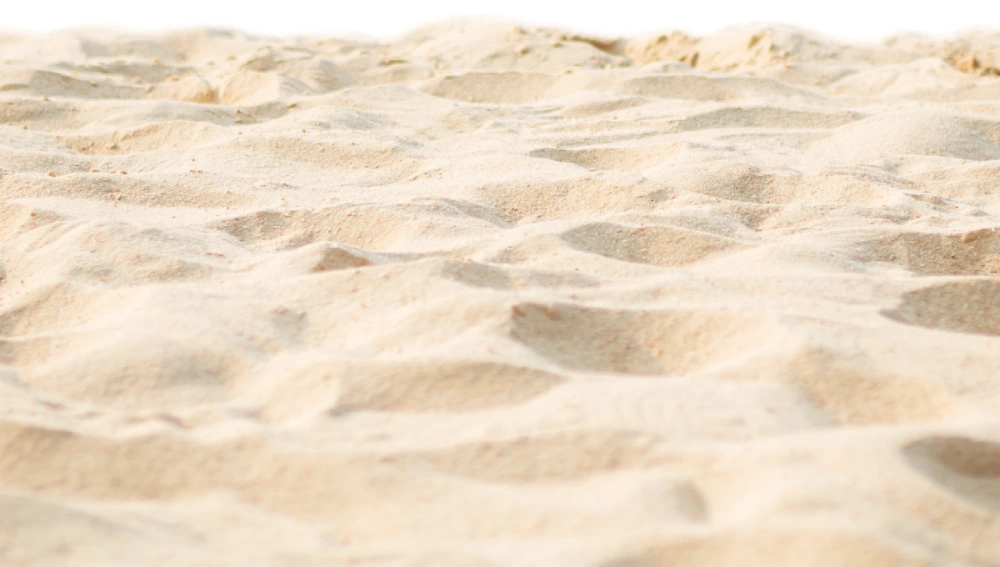Sand is one of the irreplaceable materials used in construction. Sand is mixed with materials to produce mortar and concrete to increase the strength, and stability. However, not all sand materials are made equally.
Certain sands have impurities, making them less sturdy and stable for buildings. This blog discusses different types of sand used in construction.
Types of Sand Used in Construction

Different types of sand can be used for building construction depending on its purpose and material. The classifications are listed below.
River Sand
River sand is a natural produced as a result of erosion or weathering of rocks and minerals. It is found on riverbeds, banks and floodplains which is formed over thousands of years through this process.
They have their grades, but they are generally coarse sand. Since river sand is a material of eroded rocks, it consists of silica sand from quartz.
It is usually light brown or yellowish in color due to the presence of iron oxides and other minerals. The grain size of river sand ranges from 0.2 mm to 0.5 mm which is ideal for plastering, and masonry work.
Characteristics of River Sand
- It is naturally polished through erosion, enhancing workability in mixes where artificial polishing is not required.
- It has fine and consistent grain size of 0.2 mm to 0.5 mm which is ideal for plastering and masonry.
- Nearly 80-90% of river sand constitute of high silica content, that contributes to its high strength and durability in construction.
- It is a best option as it is easy to mix, apply, and finish due to smooth texture and rounded shape.
- Due to its water retention, it has balanced moisture content supports proper curing in concrete and mortar.
- Unlike other types of sand, it contains natural minerals like quartz and feldspar, that enhance the construction aesthetics and performance.
Applications
The applications of river sand include:
- Landscaping
- Concrete production
- Land reclamation
- Filter media, and
- Beach nourishment

Concrete Sand
Concrete sand is a coarse sand that is used specifically in concrete mixtures. It is derived from crushing hard stones like granite, basalt and limestone. Concrete sand is usually washed and screened to remove impurities such as clay, silt, and organic matter to ensure its cleanliness.
Characteristics of Concrete Sand
- Due to its rough and angular texture, it is essential for creating strong interlocking bonds in concrete mixtures.
- The particle size of concrete sand ranges from 0.75 mm to 4.75 mm. It serves effective void filling between larger aggregates in concrete ensuring stability of the final mix.
- This type of sand is specifically graded after washing and screened to remove impurities such as clay, silt, and organic matter. This process ensure compatibility with other concrete components, such as cement, water, and coarse aggregates.
- It has excellent drainage properties due to its coarser grains, that prevent water from pooling within the concrete mix. This feature is crucial for reducing the risk of cracking of concrete structures.
- It is recommended option for construction of pavements, roads, and foundations. It is also used as a leveling base for pavers and as a fill material for various construction projects.

Applications
The applications of concrete sand are listed below:
- Used on foundation work
- Used in road construction
- Used in landscaping
- They are better suited to drainage systems.
Pit Sand
Pit sand is coarse sand that is taken from natural deposits. The difference between river sand and pit sand is that pit sand has a gritty texture, while river sand has a smooth texture.
Characteristics of a Pit Sand
- Since it has organic matter, the clay content in pit sand is generally higher than in other types of sand.
- When compared to river sand and M-sand, pit sand has a lower silica content ranges between 60-80%.
- The sand particles ranges from 0.06 mm to 2mm in diameter. It has lower levels of silica compared to other sand materials.
- Notably, pit sand is free from salt as presence of same might lead to efflorescence. This also cause corrosion of steel when it is reinforced with concrete.
- It is reddish or brownish in color depending on its geographical location and the composition of parent rock from where the sand is formed.
Applications
The application of pit sand can be used as:
- Bedding materials for pavers
- Sandboxes,
- Surface levelling
- Bedding for pipe
M-sand
M-sand is also known as manufacturer sand which can be used instead of river sand. It is produced by crushing hard rocks like granite, basalt, or gneiss, into fine aggregates. The production process involves several stages, including primary crushing, secondary crushing, and screening to achieve the desired particle size and shape, due to the long process of M-sand the M sand prices vary from state to state
It generally has a high silica (SiO₂) content, similar to natural sand, typically above 90%. M-sand may require slightly more water in the mix compared to natural sand due to its angular shape, which can increase the overall water-cement ratio if not properly managed.
Characteristics of M-sand
- The M-sand size is a minimum of .015 mm to 4.75 mm.
- The shape of M sand is cubical or angular.
- They have a rough texture.
- They may or may not have water content.
Applications
- M Sand is the primary choice for concrete mixtures.
- They are used in blockwork and brickwork
- They are also mixed with asphalt.
Utility Sand
Utility sand is popularly used in construction projects which is composed of mix of feldspar, quartz, and other minerals. It is also known as backfill or fill sand. The utility sand has an irregular shape and is made of feldspar, quartz, and other minerals. It is commonly used as bedding material for laying underground pipes and conduits.
For any construction that require a stable support, Utility sand is go-to material which requires reliable backfill for projects. But due to its irregular particle shape and texture, it’s only preferred for limited usage in concrete mixes.
Characteristics
- The size should be angular and have a sharp edge.
- The particle size of utility sand ranges from 0.075 to 4.65 mm.
- Depending on its application, the grades vary.
Applications
The applications of utility sand include:
- Utility sand can be used for filling voids.
- They can be used as trenches in construction.
- They are used for filling large excavation areas,
- They are used in bedding and pipe fittings.
Fill Sands

Fill sand is a primary material used in construction projects which is cost-effective and easy to work with. It consists of ground particles of silica, feldspar and other minerals. The main component in it is quartz(SiO₂) which vary based on the source of the sand.
The particle size of fill sand is generally very fine, with grains typically smaller than 5 mm in diameter. It is commonly used as a base or sub-base material, backfill material in trenches, around foundations, and retaining walls, also a bedding material for laying underground pipes and conduits.
Characteristic
- The characteristics of fill sand include a high compaction rating.
- The size of fill sand ranges between 0.2 and 2.0 mm.
- The shape of the sand should be angular and round.
Applications
Application of fill sand includes:
- Utilising sand for filling holes or gaps
- They can be used for building foundations, driveways, or walkways.
- They have better drainage applications.
- They are also used in sandblasting.
Which Sand is Good for House Construction?
M sand is one of the common sands used for construction purposes. The M sand is used for projects that require quality, consistency, minimal impurities, and availability.
As far as building walls are concerned, builder’s sand makes a strong foundation when mixed with cement.
Concrete sands are best used for foundation works due to their flexible strengths.
Conclusion
For your construction purposes, make sure that the sand is free from impurities, has less than 3% silt content, and is graded well. Consult your engineer or expert to understand the best sand for your construction type.
FAQs
Different types of sand include fill sand, pit sand, concrete sand, and river sand.
Concrete sand, with particle sizes between 0.15 and 4.75 mm, is better suited for construction purposes. It lays a strong foundation for the building.
Zone one of sand is coarse, the second and third zones of sand are moderately coarse, and the fourth zone has the finest sand.

